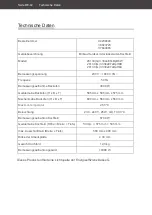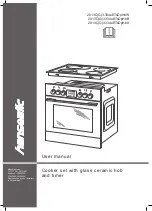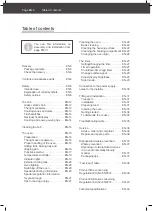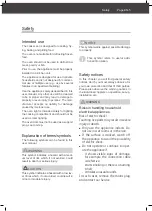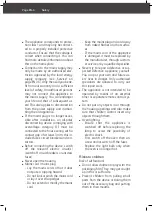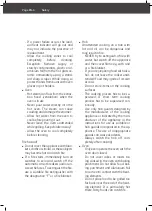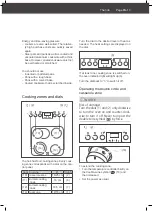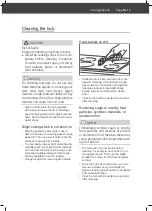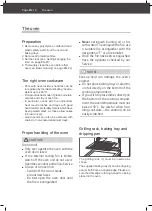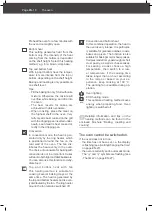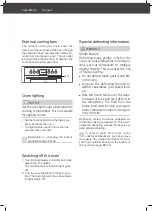
Page EN-14
The hob
To reduce the size of the cooking zone again,
• turn the switch anti-clockwise to “0” and
then turn the switch clockwise to the de-
sired power.
Flush switches
The switches can be pushed in to protect
them from hot steam during operation and
from contamination.
• Lightly press on the switch to it push in/
out.
Residual heat display
(13)
The residual heat display (13) will remain illu-
minated for as long as a cooking zone is still
warm. It warns you of any possible burning
and lets you know that you can still use re-
sidual heat to cook.
CAUTION!
Risk of burns!
If a power failure occurs, the residual
heat indicator will go out and may not
indicate the presence of residual heat!
■
Do not touch a hot cooking zone af-
ter a power failure.
Cooking and energy-saving tips
Set-
tings
1)
Application
Examples
1
Cooking on low /
Heating
Soaking rice
2-3 Cooking most vege-
tables on medium
For soups
and vegeta-
bles
4-5 Slight roasting /
Cooking on high
For breaded
food
6-7 Normal roasting
For roast po-
tatoes
8
Braising
For braising
9
Browning and par-
boiling
For pot
roasts and
potatoes
1)
For smaller quantities ½ level lower, for
larger quantities ½ level higher.
– To sear and parboil food, always select the
highest setting.
– Once the pot boils and steam forms or the
steak is brown on both sides, switch to a
lower level; for larger pots and pans use
the setting “2”, otherwise setting “1” is suf-
ficient.
– Roasts weighing more than 1 kilogram are
best cooked in the oven.
– Use the right dishes and a little water/oil to
cook; this helps to preserve the vitamins.
– Use the residual heat of the cooking zones.
The heat is sufficient enough for 5 to 10
minutes, e.g. for soaking rice.
– When cooking, always leave the lid on the
saucepan wherever possible. Liquids can
be brought to the boil more quickly with the
lid on than without.
– Turn the level down quickly and continue to
cook at the lowest possible setting.
– Always use pressure cooking saucepans
whenever possible. This will halve the
cooking process and you will save a lot of
energy.
– Only use as much water as you really need
to cook the food. A lot of energy is required
to warm up water.

